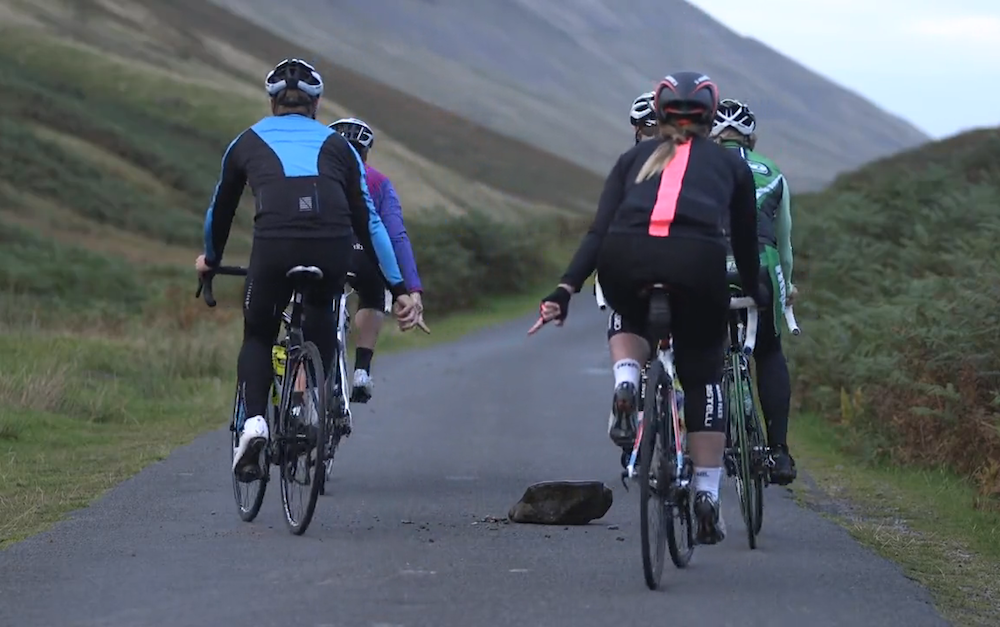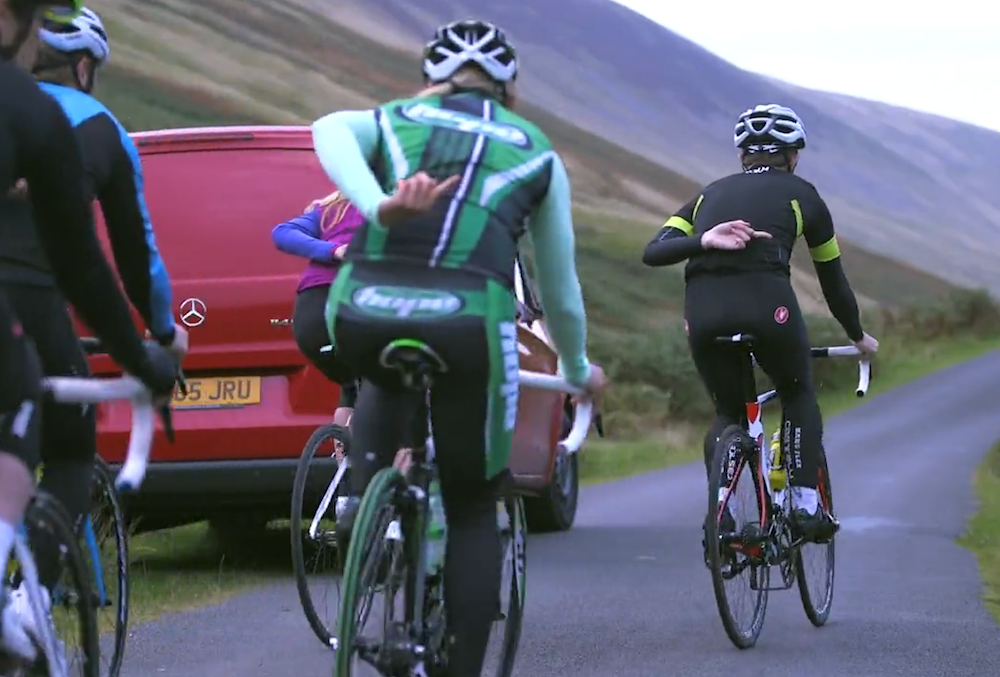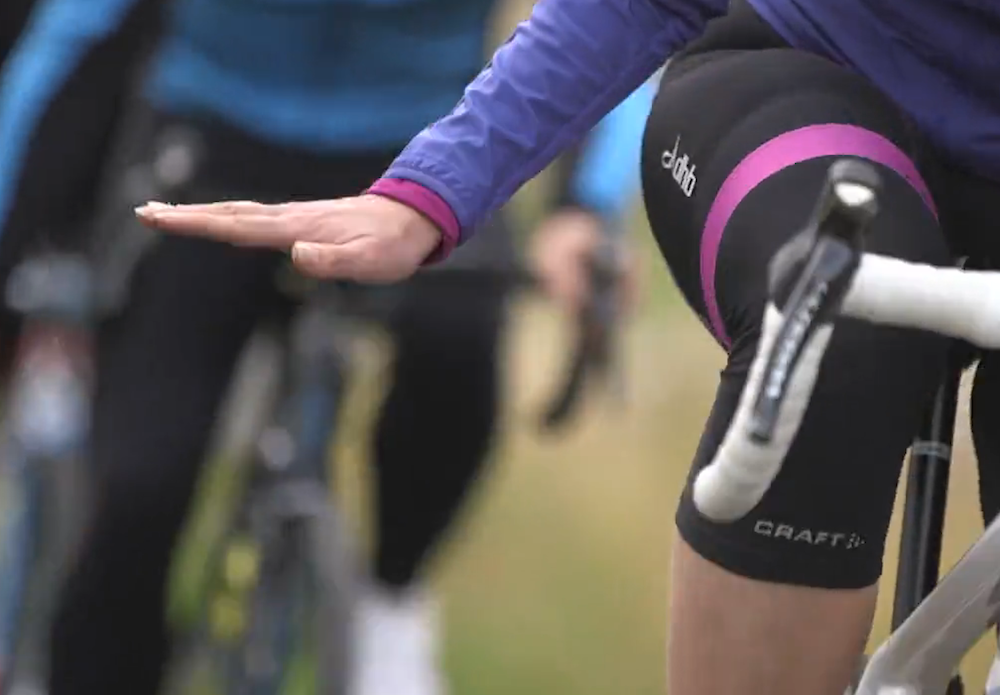How to use hand signals on group rides
Hand signals are vital for the safety of everyone riding in your group, so here's what you need to know

Whether you are brand new to cycling or an experienced racer, communication when riding in a group is imperative for not only race tactics but for the safety of everyone cycling out on the road as well.
Therefore hand signals are a crucial skill that must be adopted to communicate during a sportive, a club ride or a race. Here are a few common signals that you will need to know when you hit the road with other riders.
In the video above, and written below, we've explained the key hand signals that all cyclists need to know before they head out for their first group ride.
Potholes/other road hazards
As we all know, poor road surfaces exists wherever you live in the world. Making fellow riders aware of any upcoming hazard is fundamental to the safety of the group.
This could range from a pothole or a rock intruding on the expected route, if you can see an obstruction up the road, clearly point down to the hazard and warn the group of riders verbally.
Some riders can be more conscientious about this than others. You should always point out potholes or large obstructions, smaller road imperfections will come down to group etiquette, and you'll pick it up over time.
Moving out into the road

When riding in a group it is sometimes difficult to see what is clearly up the road, this can be particularly tricky if approaching a parked car or pedestrian that the whole group needs to avoid.
Get The Leadout Newsletter
The latest race content, interviews, features, reviews and expert buying guides, direct to your inbox!
Pointing or gesturing with a bent arm behind your back to where the group needs to move to avoid the danger will mean ample warning is giving to all the riders in the group in particular the ones further back. Once again signals should be backed up with verbal warnings if appropriate to what the actual danger is ahead.
Slowing down

As much as we would like to be unrestricted when out riding on a bike, sometimes slowing down is the only option if the road narrows or an obstacle restricts a clear path that can be rode at high speed.
This could be because of a horse or a tractor in a narrow country lane or maybe just a general easing off of the pace. You can convey this message to the rest of the group by raising your arm out and motion as if you are gently patting an invisible dog.
Stopping signal

There will be times where you may have to stop suddenly and have to warn riders behind. Whether this is because of a crash up ahead, riding up to a junction or even a puncture of a teammate or yourself.
If this does occur put your hand flat out to the side of your body and call out ‘stopping’. If possible, don’t slam on your brakes as there may be someone immediately behind you who hasn’t heard the call or isn’t anticipating a sudden stop in the road and it could be more dangerous than the initial reason you were stopping for in the first place.
Flick of the elbow

This signal is more specific to racing and club riding rather than safety but it is crucial to understand what it means (unless you want to become very unpopular).
As we all know, riding on the front of the group can be tough work and requires rotation so if you want the next rider to come through, flicking out your elbow signals that you are about to move over.
You may have seen this in pro races within teams chasing down a breakaway or when riders in a breakaway are trying to work together.
However as seen on a number of occasions in the professional ranks, this signal only works if the rider behind is actually willing to come through and ride on the front of the group! It's not a signal you have to obey, but, if your breakaway is caught because you wouldn't take a turn, you may regret it (and lose some potential allies along the way).

Thank you for reading 20 articles this month* Join now for unlimited access
Enjoy your first month for just £1 / $1 / €1
*Read 5 free articles per month without a subscription

Join now for unlimited access
Try first month for just £1 / $1 / €1
Paul Knott is a fitness and features writer, who has also presented Cycling Weekly videos as well as contributing to the print magazine as well as online articles. In 2020 he published his first book, The Official Tour de France Road Cycling Training Guide (Welbeck), a guide designed to help readers improve their cycling performance via cherrypicking from the strategies adopted by the pros.
-
 Aero bikes with gravel wheels?: Six tech insights from Paris-Roubaix Femmes
Aero bikes with gravel wheels?: Six tech insights from Paris-Roubaix FemmesEverything we found out about tyre widths, self-inflating systems, and wheel choices from the cobbled Monument
By Tom Davidson Published
-
 'This race is absolutely disgusting': Peloton reacts to another brutal Paris-Roubaix Femmes
'This race is absolutely disgusting': Peloton reacts to another brutal Paris-Roubaix FemmesNow in its fifth edition, Paris-Roubaix Femmes is still a tough race, even for the best bike riders in the world
By Adam Becket Published